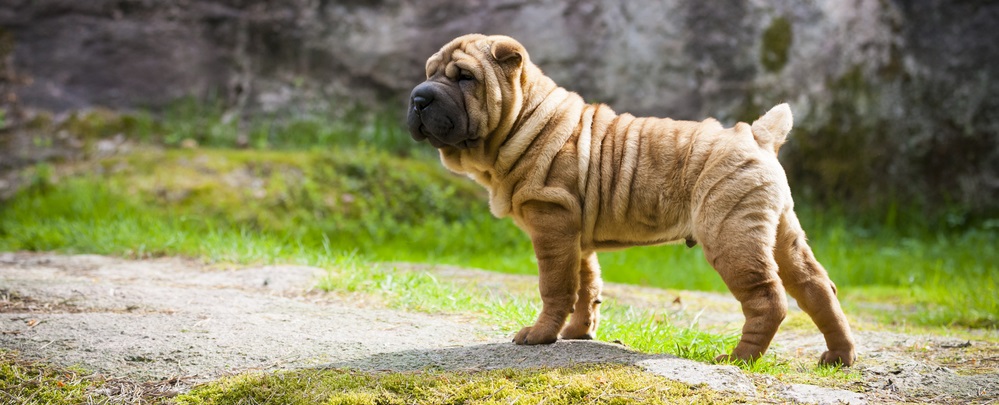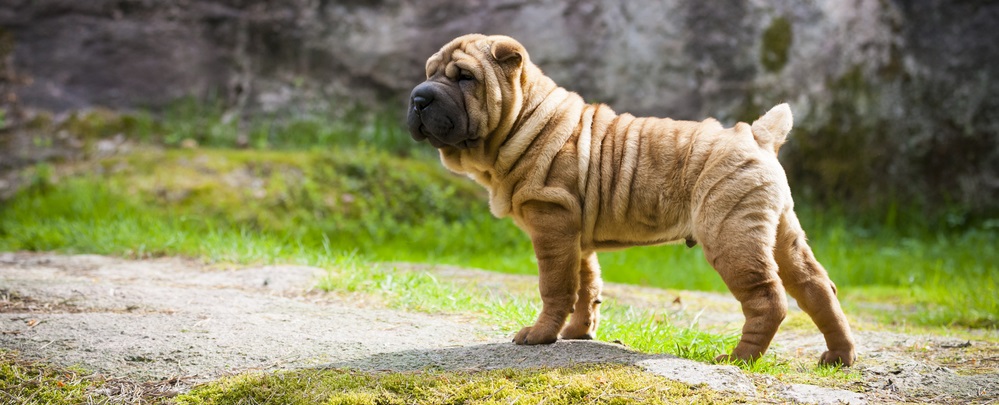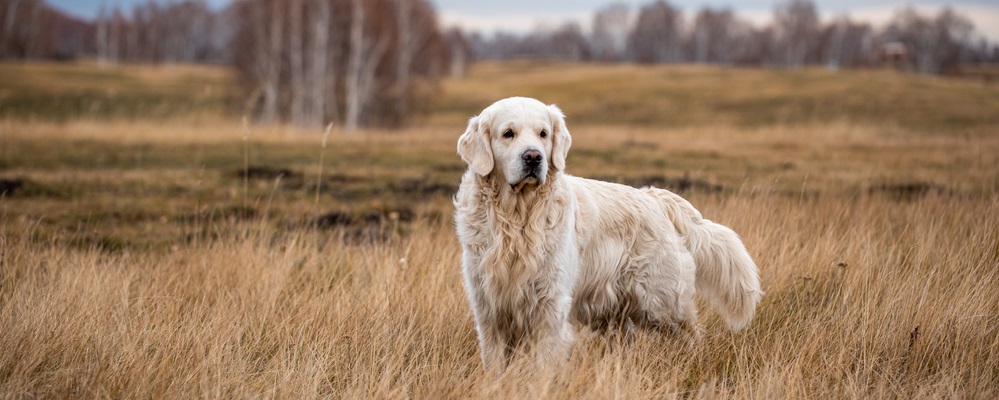The familiar squeak of their favorite squeaky toy. The rat-a-tat of kibble hitting their bowl. And of course, their neighborhood pal’s bark—countless sounds fill your dog’s life. Dog ears aren’t just cute scratching opportunities but useful tools to maintain for their overall well-being.
The bad news? Ear problems are a major dog health matter. In fact, they’re the second most common vet issue. The good news? With proper cleaning, you can keep your pet’s ears free of dirt and dangerous infections.
If this is your first time paddling down the ear canal, here is a safe and informed guide for how to clean dog ears.
Mark the Calendar: Time for the Monthly Check-Up
To clean or not to clean, that is the question.
As a general rule of thumb, cleaning your dog’s ears once a month is a healthy routine to follow.
Too few cleanings can allow germs and debris to fester and cause infections or irritation. On the flip side, too many cleanings, especially when not necessary, can remove too much ear wax from your dog’s ears and lead to irritation.
Note: Ear wax is a protective substance, not something that needs to be removed!
To find the perfect ear-cleaning schedule for you and your pup, below are some signs to look out for.
Sensory Signs for Routine Ear Cleaning
Let’s start with the traits of a healthy dog ear: pink, dirt-free, unirritated, and odorless. Monthly cleanings will usually keep their ears in this pristine condition. Any noticeable changes, and it’s possibly time for a switch-up.
If you’re seeing mild discharge and redness around the inner ears, that’s a good sign your dog’s ears need more frequent cleanings. The same goes for funky odors or increased itching and head shaking, which are common signs of growing infections in your pet’s ear. If you notice your dog scratching ear to ear, it’s time to reevaluate.
Additionally, puppies, active dogs, and dogs living in humid environments will generally require more frequent washes.
Breed Matters
You wouldn’t feed a Chihuahua the same as a Great Dane, right? Like all dog care, ear cleaning is breed-specific. Whether due to ear shape or other genetics, some breeds need a little more ear care (think floppy or hairy ears).
A few of those breeds include:
- Afghan Hounds
- Cocker Spaniels
- Labrador Retrievers
- Pit Bulls
- Shar-Peis
- Poodles
Even with more infection-prone breeds, you can stay on top of any dog’s ear care needs with the below tips.
Use the Right Tools
Maybe Q-tips do the trick for your ears. But cotton swabs are the last thing you should use on your pup (as this can risk damaging the ear canal). Cleaning dog ears requires a proper, medically-informed toolkit.
If you’re unsure what is a good ear cleaner for dogs, here’s a starter pack:
- Cotton Balls or Tissue – While Q-tips are not the answer, cotton balls offer a gentle, irritant-free material that’s perfect for routine ear cleaning. Pick up a tissue or cotton ball to softly wipe away any debris or discharge around your dog’s ear cartilage. Don’t press these into the ears or use them in any way you would a Q-tip.
- Cleanser – The right cleanser can make all the difference. To cover all of your bases, choose a gentle cleaning solution that wards off germs and can treat specialty conditions like swimmer’s ear or mites. Vetericyn’s antimicrobial ear rinse is a perfect non-toxic solution that will protect the ears of puppies and older hounds alike.
- Tweezers or Scissors – For all the spaniel owners out there—you know how hairy it can be getting around your dog’s ears (literally). To make a clear path for cleaning, you’ll need to trim that ear fur. Tweezers are useful for small, tricky areas, while round-tip scissors can snip off any larger tufts.
- Their Favorite Treats – A little snack after grooming is more than just a “thank you” to your dog. You’ll also teach them that ear cleaning is an activity to enjoy (or at least tolerate).
Refine Your Technique
Even with the best setup and tools in the world, without the right technique, you can end up causing more damage than care.
When cleaning the ears, the best technique is to start gentle, then be gentler, and finally end with the gentlest. Put simply, you won’t need to be aggressive with your pup’s ears.
Here are the essential steps for the best home ear cleaning routine.
Understand the Anatomy of Dog Ears
Every wise traveler brings a map. Before embarking on an ear cleaning journey with your dog, get to know the inner workings of these organs.
Like most parts of the body, the deeper you go into ears, the more damage and pain you risk. That’s why a light touch is essential for cleaning (and why Vetericyn’s safe products are ideal over other cleansers).
Here are the main dog ear parts to know:
- Inner Ear – With the spiral-shaped cochlea, the vestibular system, and other sensitive nerves, the inner ear rules your dog’s hearing and balance. You most likely can’t reach this area. But with improper cleaning or care, a harmful inner ear infection can develop.
- Middle Ear – Think of the middle ear as the doorway between the inner and outer parts. The eardrum lives here, alongside the three ear bones: the anvil, hammer, and stirrup. Harsh cleaning can lead to irreparable eardrum damage (a major reason for the no Q-tips rule).
- Outer Ear – You know the floppy part of your dog’s ear that you like to scratch behind? That’s called the pinna, and it’s shape has all to do with your pet’s incredible hearing. And right under the surface is the ear canal, which goes straight down to the eardrum. You’ll find most wax, debris, or dog ear discharge in this area.
Reminder: Ear wax by itself is not a harmful substance. Quite the opposite, it’s beneficial to have!
Follow a Step-by-Step Routine
To become the ear-cleaning dog whisperer that you were made to be, it’s helpful to break down the process into chunks. Try this routine with each ear for proper and effective cleaning:
- Position – For small dogs, place your pet comfortably on your lap. For larger breeds, position yourself at the side of your dog, preferably with them seated or lying down.
- Calm and Soothe – Ensure your dog is on the same team with a short massage or petting session. By making them comfortable, you’ll have a much easier and safer time cleaning ears.
- Expose – Clips or a cleaning partner come in use here. If your dog’s ears are floppy, pin or hold the flap back to reveal the cartilage and ear hole. (Hair trimming is an extra step here, if necessary).
- Apply Solution – Slowly squeeze the cleaning solution into your dog’s ear canal (be prepared for some head shaking). Make sure to massage the base of the ear for about 30 seconds, ensuring the wash makes its way down the ear.
- Wipe Away – Take your cotton material and gently rub off any debris or discharge on the exposed cartilage. Do not dig deep here—you’ll risk pushing dirt further down the ear, or even causing damage.
- Dry Off – Use a soft towel or T-shirt to wipe away any remaining solution.
- Give Medicine – If you’re currently treating an ear infection, administer the medicine at this time. Make sure to not touch the bottle on your dog’s actual ear to avoid germ spreading.
- Say Thank You – Offer a treat to your pup for their patience and love. This can make next time a little easier.
Deal With Discharge
Ear cleaning is all about preventing infections. But sometimes, life happens. Dog ear problems are incredibly common, affecting almost 20% of all pups.
To keep ahead of any potential vet visit, here are some potential types of ear infection or medical issues to look out for:
- Ear Mites – These critters may technically be visible. But they’re so tiny, they could slip right past an unassuming eye. If you notice extra head shaking and scratching, as well as crusty dark brown or black discharge in the ears, mites might be the culprit.
- Outer Ear Infections – Waxy yellow or reddish discharge, inflammation, itchiness, and a pungent odor all point towards an outer ear infection. Call your veterinarian if you notice these signs, since anything from bacteria to yeast could be at play.
- Inner or Middle Ear Infections – Is Fido suddenly falling over or walking in circles? Like outer ear problems, inner and middle ear infections will show discharge and redness. But a change in balance skills and nausea levels are specific indicators of internal ear issues. A vet consultation is urgent here.
- Allergies – The catch-all of inflammatory issues, allergies are a common source of dog ear infections. Stay on top of any allergy symptoms or risks by choosing a vet-approved medicine for your dog.
- Polyps and Tumors – Rare, but possible. Certain breeds, like german shepherds or cocker spaniels, have a propensity to developing ear canal tumors. If your dog has recurrent ear infections, ask your vet to check for any developing bodies in their ears.
Happy Ears, Happy Dogs
If you’re feeling anxious over possibly harming your beloved pet in the name of hygiene, take a deep breath.
By following this guide, you’ll have all the essentials for how to clean a dog’s ears safely. And don’t forget—Vetericyn has your dog’s back (or should we say, ear canal) with our antimicrobial and non-toxic ear cleaning products.
Do you hear that? That’s the sound of happy ears and happy dogs.
Sources:
- American Kennel Club. How to Clean a Dog’s Ears. https://www.akc.org/expert-advice/health/how-to-clean-dogs-ears/
- VCA Hospitals. Instructions for Ear Cleaning in Dogs. https://vcahospitals.com/know-your-pet/instructions-for-ear-cleaning-in-dogs
- PetMD. Dog Breeds Prone to Ear Infections. https://www.petmd.com/dog/care/dog-breeds-prone-ear-infections
- American Kennel Club. Dog Ear Infections: Symptoms, Causes, Treatment, and Prevention. https://www.akc.org/expert-advice/health/dog-ear-infections/
- Insider. How to clean your dog’s ears and what you need to do it.
- https://www.insider.com/how-to-clean-dogs-ears#how-to-wipe-your-dogs-ears-5
- Nationwide Pet Health Zone. Top 10 Reasons Pets Visit Vets. https://www.petinsurance.com/healthzone/pet-health/health-conditions/top-10-reasons-pets-visit-vets/





